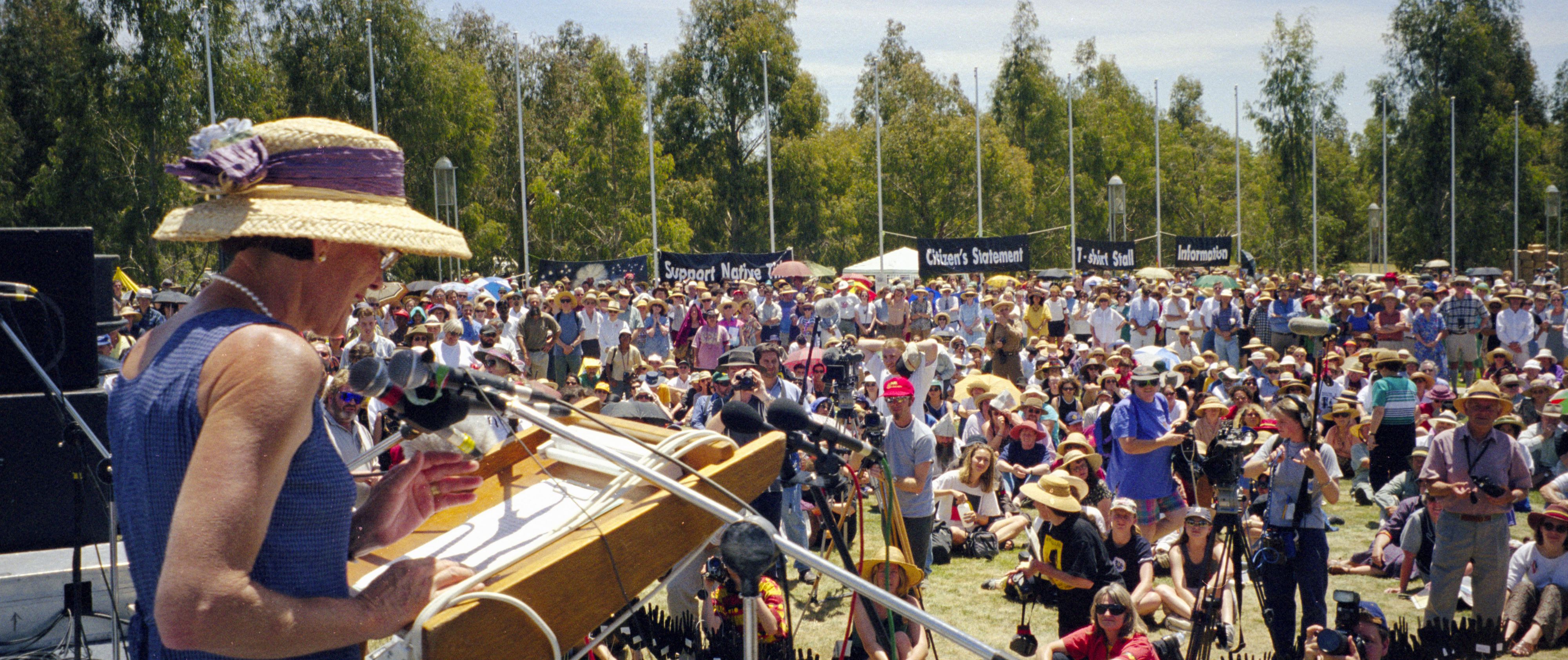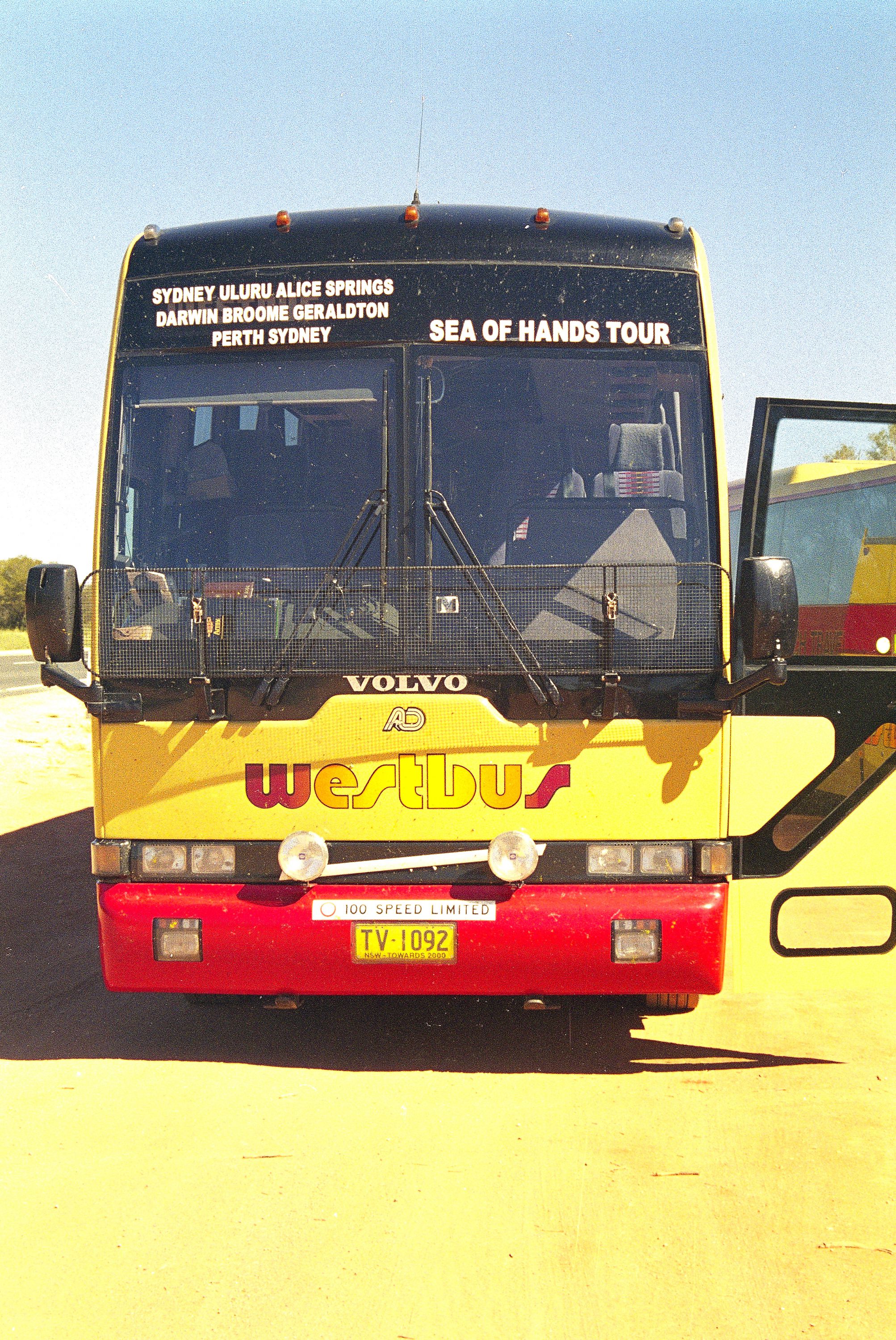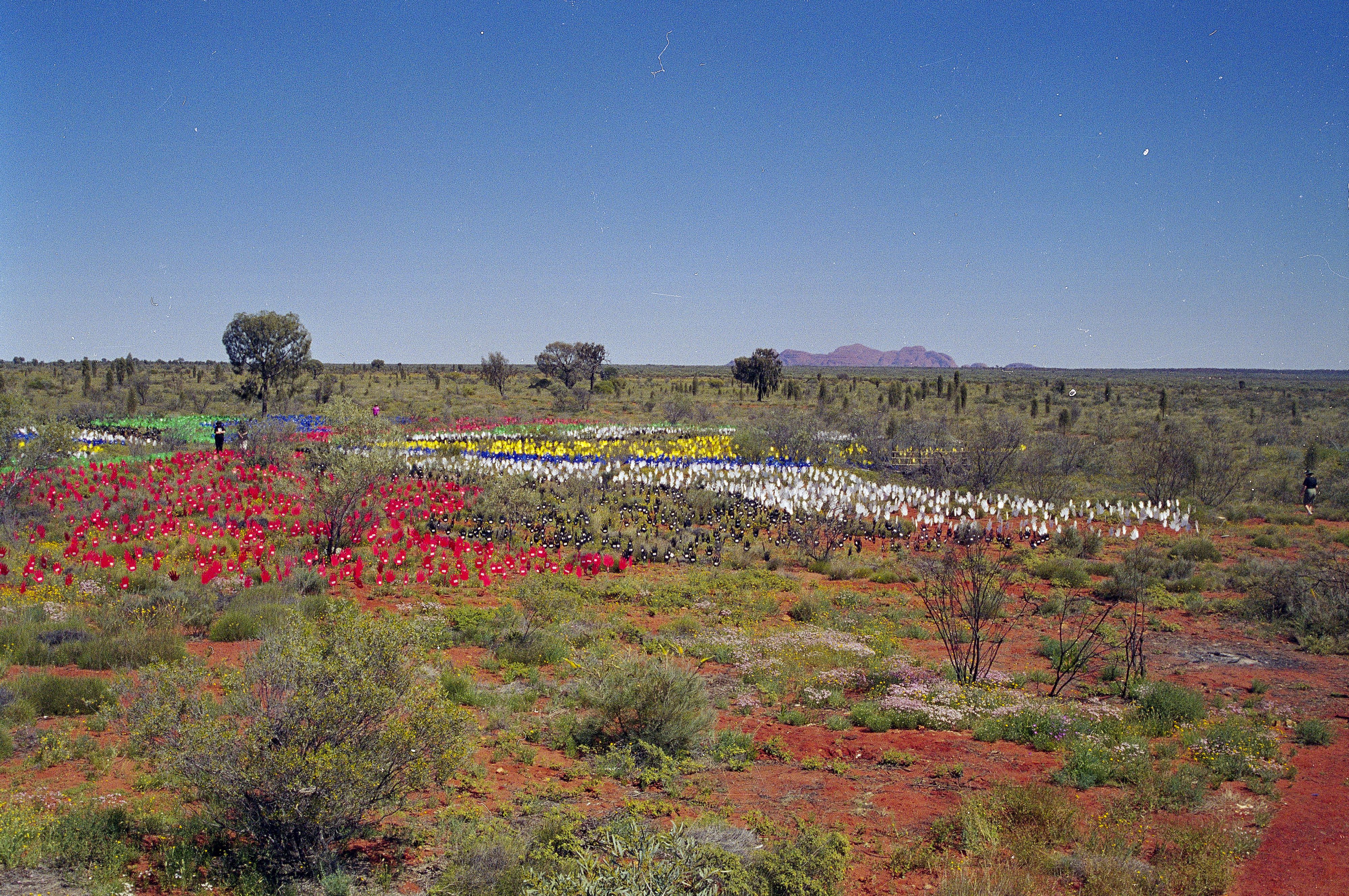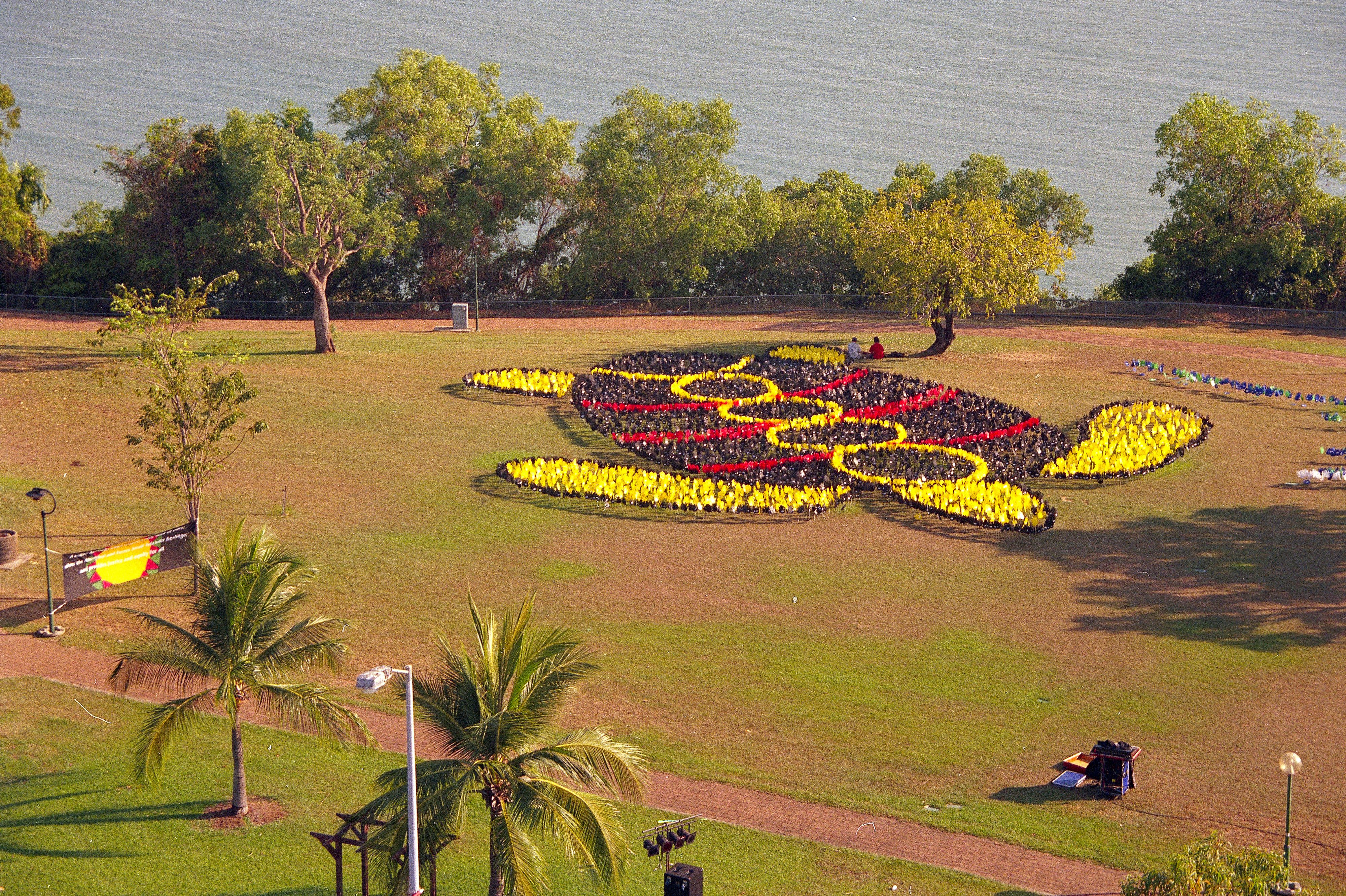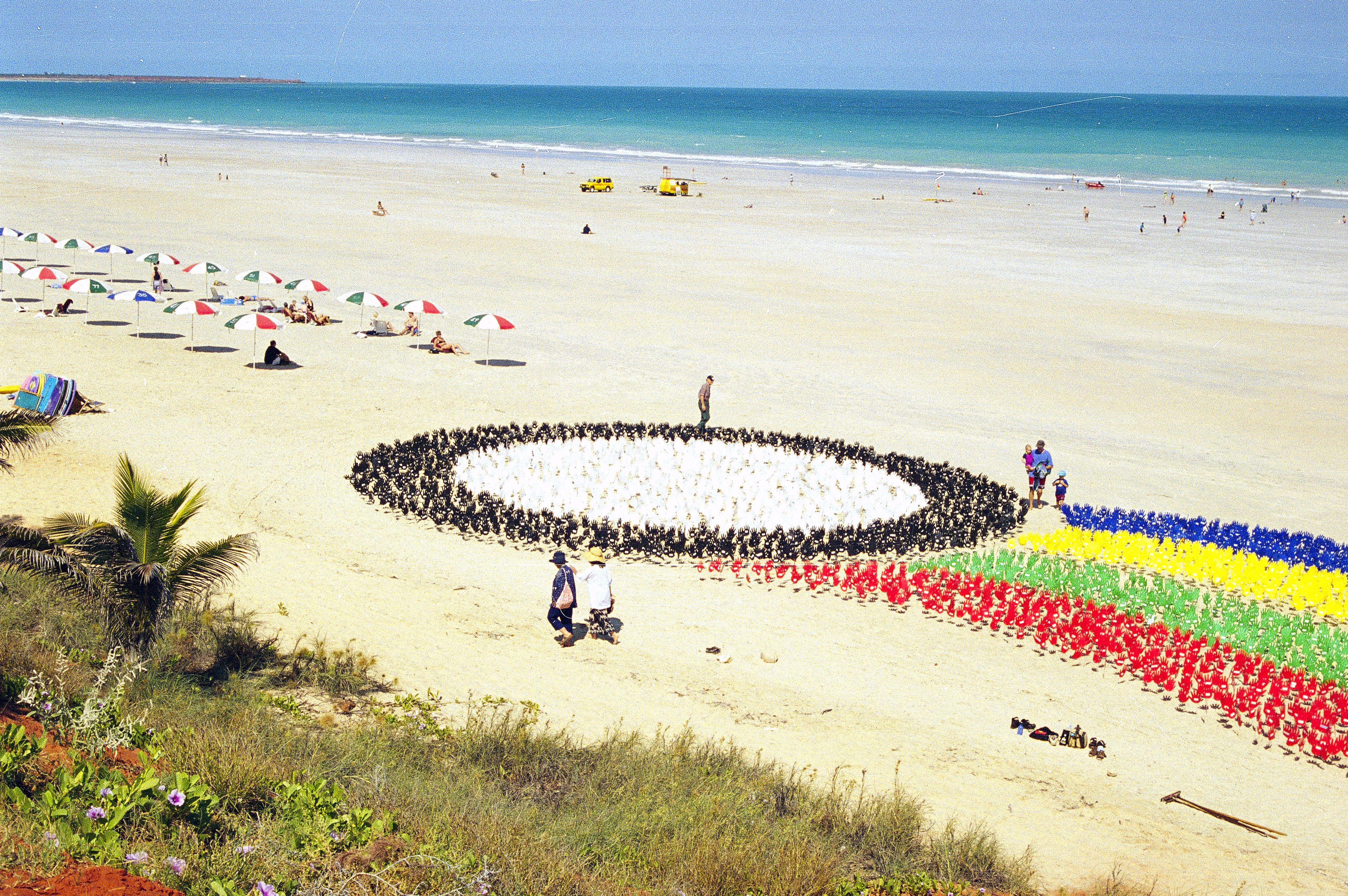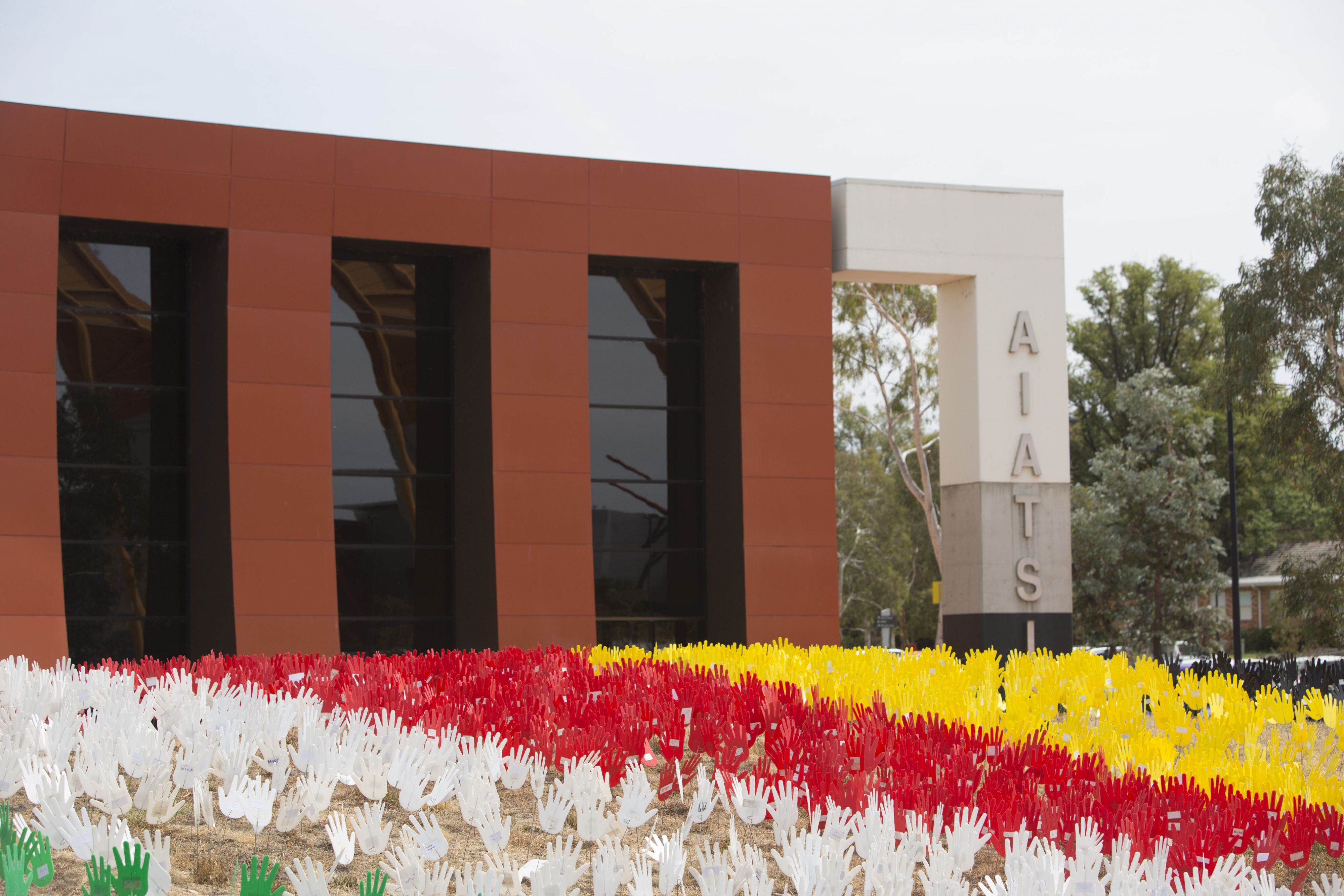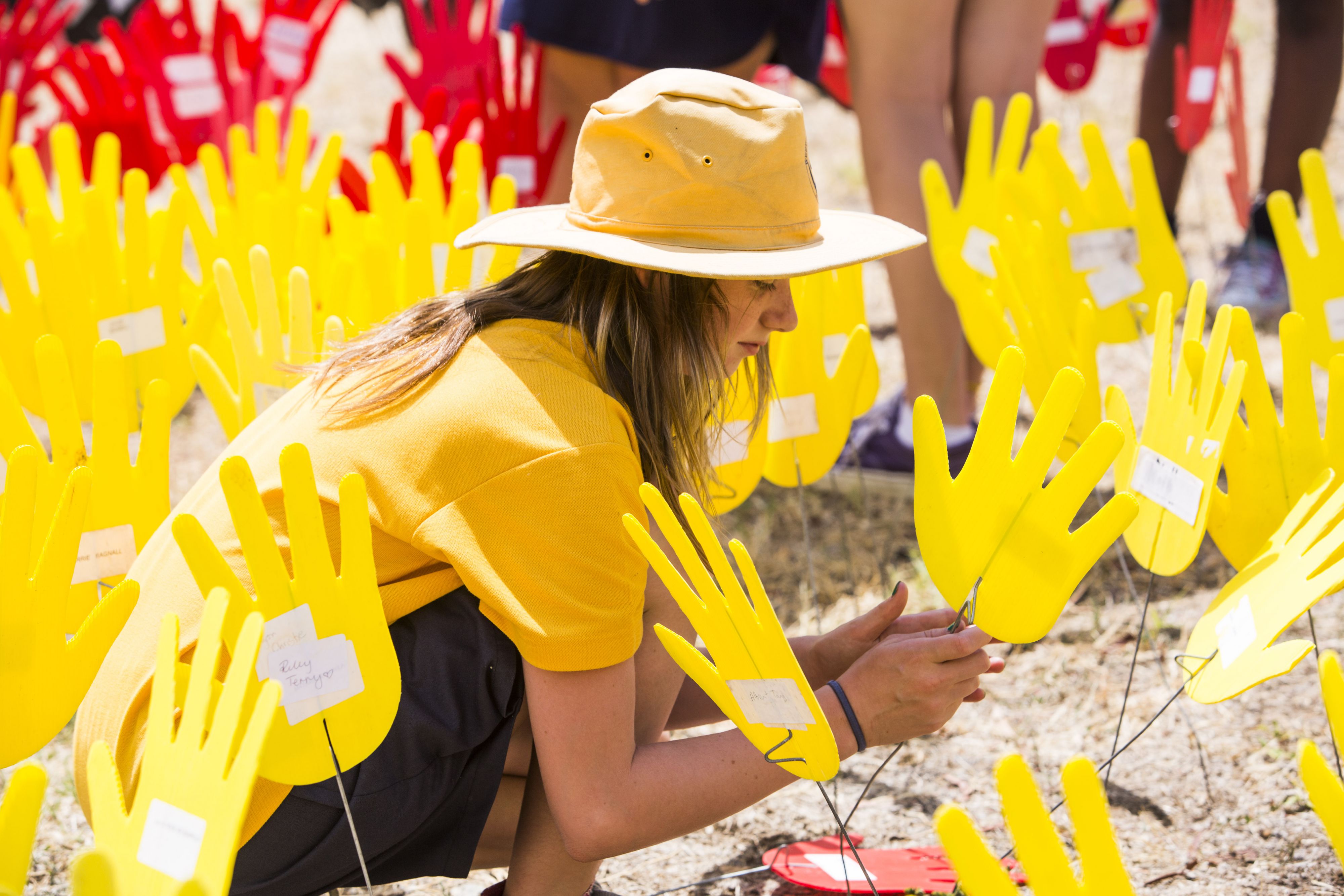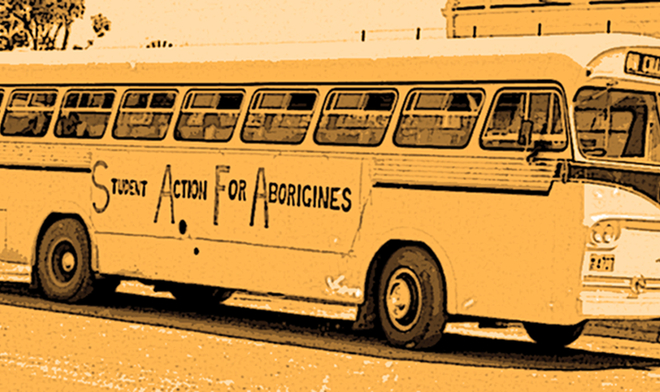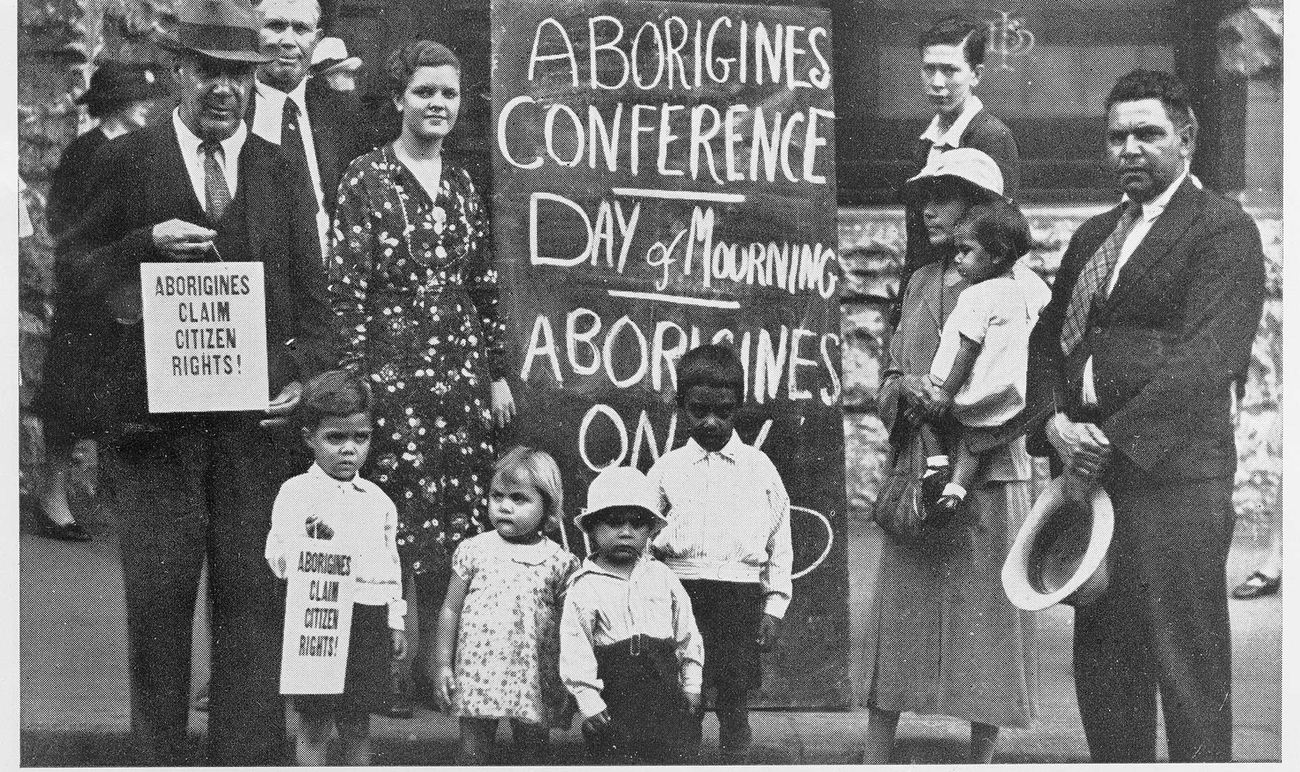On 12 October 1997, Australia awoke to the biggest art petition the nation had ever seen. Assembled on the lawns of Parliament House, Canberra were thousands of plastic hands bearing the names of individual Australians that had signed the Citizens’ Statement on Native Title.
The mass display of 70,000 hands in the colours of the Aboriginal and Torres Strait Islander flags was designed by Australian Artists Against Racism (AAR) for Australians for Native Title and Reconciliation (ANTaR). The field of hands was created to resemble the white crosses in war cemeteries.
The Citizens’ Statement was a petition authored by ANTaR co-founder Phil Glendenning aimed at mobilising non-Indigenous support for native title and reconciliation. The statement was launched on 1 May 1997 in response to the Howard Government's Ten Point Plan strategy for amending the Native Title Act 1993. The Sea of Hands installation was a physical representation of the Citizens’ Statement.
In the decades since, Sea of Hands installations have become a wider symbol of the people’s movement for reconciliation. Photographs in the AIATSIS Collection document this transformation and show different installation designs.
The link between the Citizens’ Statement and the Sea of Hands can be seen in the photograph below from the second installation of the Sea of Hands on 25 November 1997.
The installation of 120,000 hands on 25 November 1997 had as its focus the launch of the 'Six Steps to Co-existence' document created by ANTaR and the Indigenous Working Group on Native Title (IWG) as an alternative to the Ten Point Plan.
The 'Six Steps' document was endorsed by opposition political parties, Indigenous and non-Indigenous national peak organisations. One of the most significant photographs in this collection shows some of the key protagonists who signed the document.
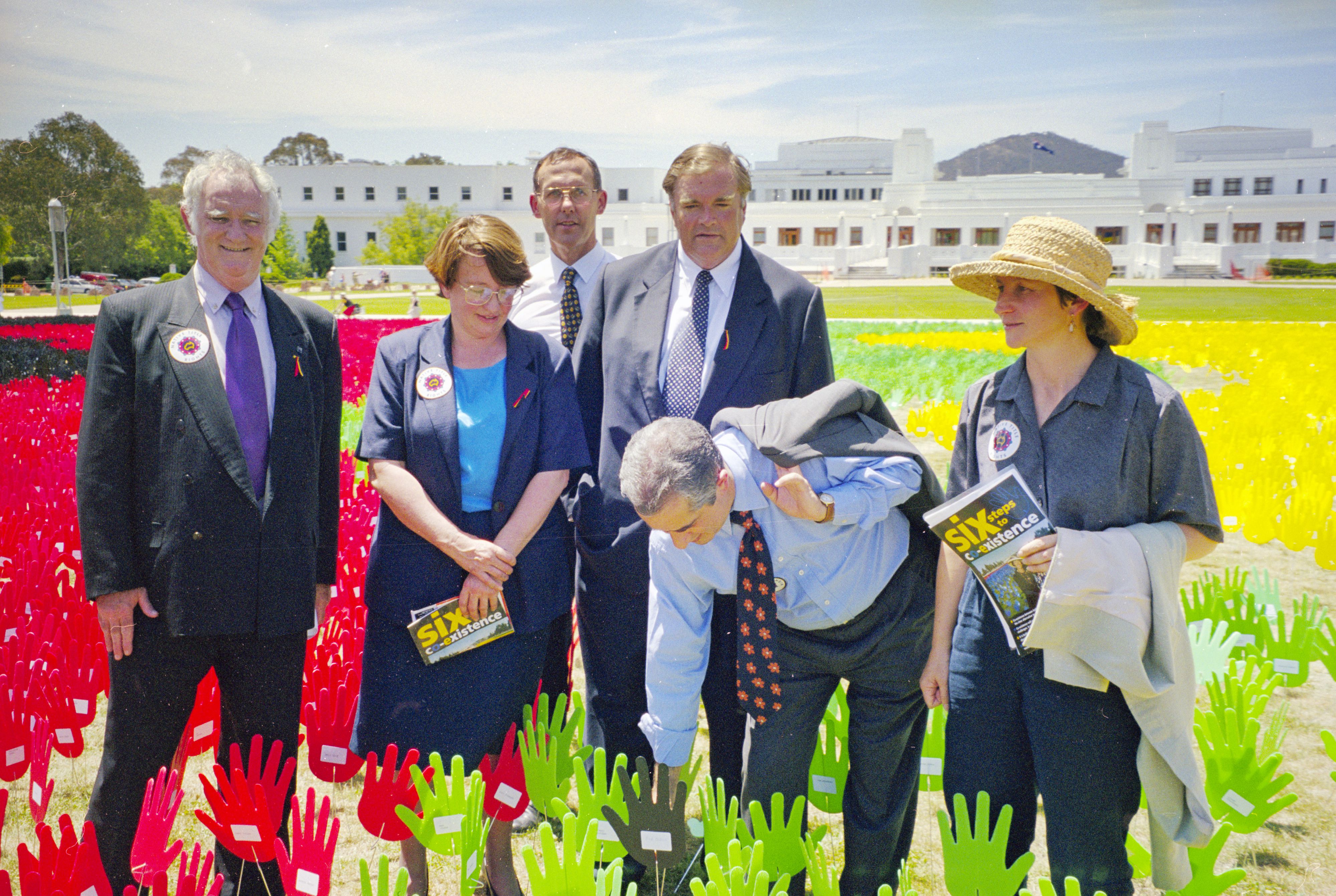
Senator John Woodley (Democrats Indigenous Affairs Spokesperson), Senator Meg Lees (Leader of the Democrats), Senator Bob Brown (Leader of the Greens), Kym Beazley MHR (Labor Leader), Senator Nick Bolkus (Opposition Attorney General) and Camilla Cowley (Queensland pastoral landholder) holding copies of the Six Steps document, 25 November 1997.
Senator John Woodley (Democrats Indigenous Affairs Spokesperson), Senator Meg Lees (Leader of the Democrats), Senator Bob Brown (Leader of the Greens), Kym Beazley MHR (Labor Leader), Senator Nick Bolkus (Opposition Attorney General) and Camilla Cowley (Queensland pastoral landholder) holding copies of the Six Steps document, 25 November 1997.
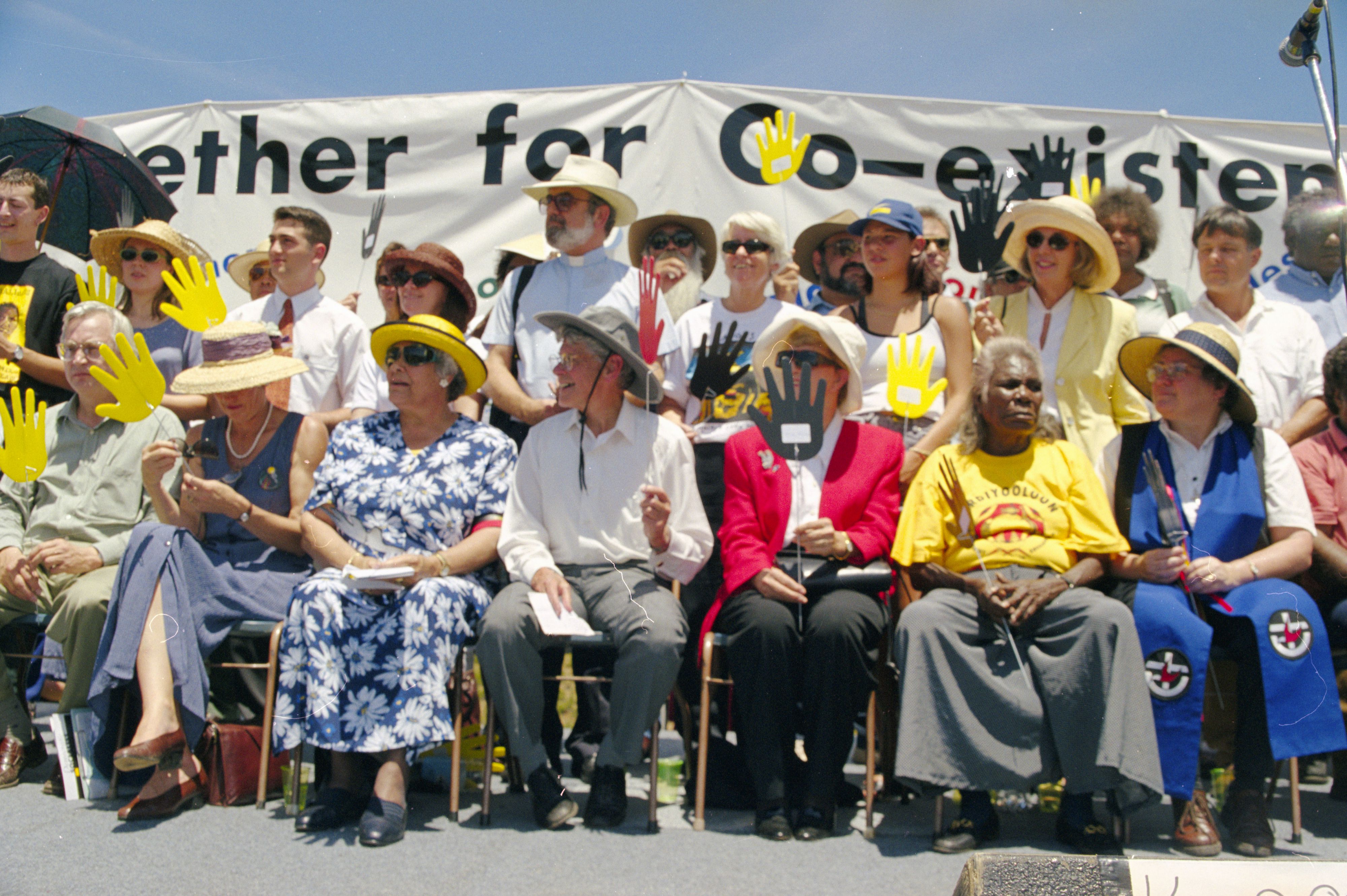
Signatories to the 'Six Steps' document including church leaders, Lowitja O'Donoghue (former ATSIC chair) and Gladys Tybingoompa (Wik litigant), 25 November 1997.
Signatories to the 'Six Steps' document including church leaders, Lowitja O'Donoghue (former ATSIC chair) and Gladys Tybingoompa (Wik litigant), 25 November 1997.
To maintain the momentum for the Sea of Hands petition and to enable Australians around the country to show their support for reconciliation by planting a hand, ANTaR toured the Sea of Hands from Sydney to Perth in September 1998. The following photographs by James Cleland show installations from a number of stops on that tour. The designs were all created by Aboriginal artists, though unfortunately not all of the artist’s names are recorded.
The Sea of Hands has been installed in every major city and many regional locations throughout Australia as well as overseas. It continues to gather signatures, displays appear in a wide variety of contexts and it has truly been transformed into a wider symbol of the people’s movement for reconciliation, rights and respect for Indigenous Australians.
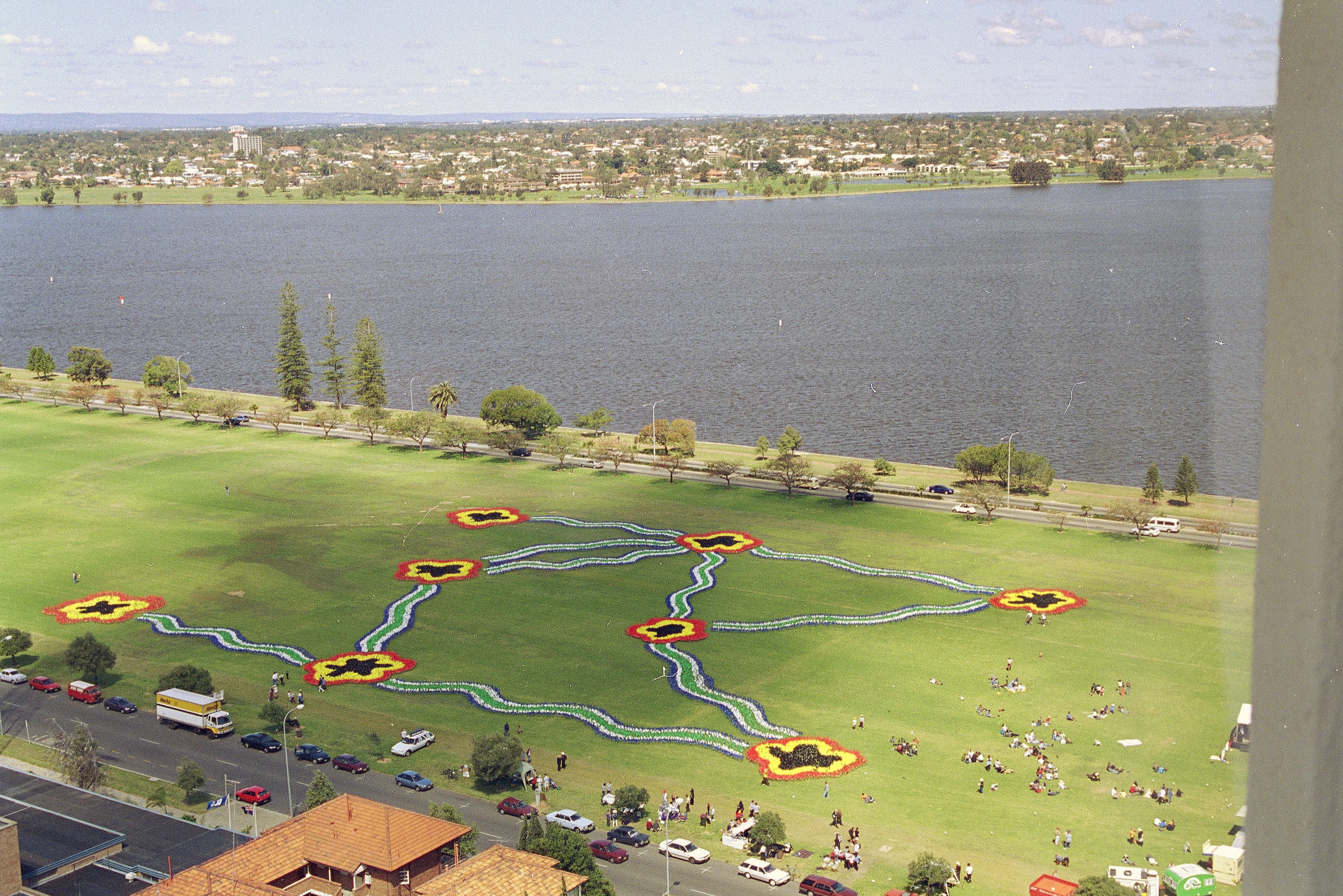
The design represents all Australian states joined together congratulating Cathy Freeman on being named Australian of the Year in 1998. Langley Park, Perth. Designer: Janet Hanson, 20 September 1998.
The design represents all Australian states joined together congratulating Cathy Freeman on being named Australian of the Year in 1998. Langley Park, Perth. Designer: Janet Hanson, 20 September 1998.
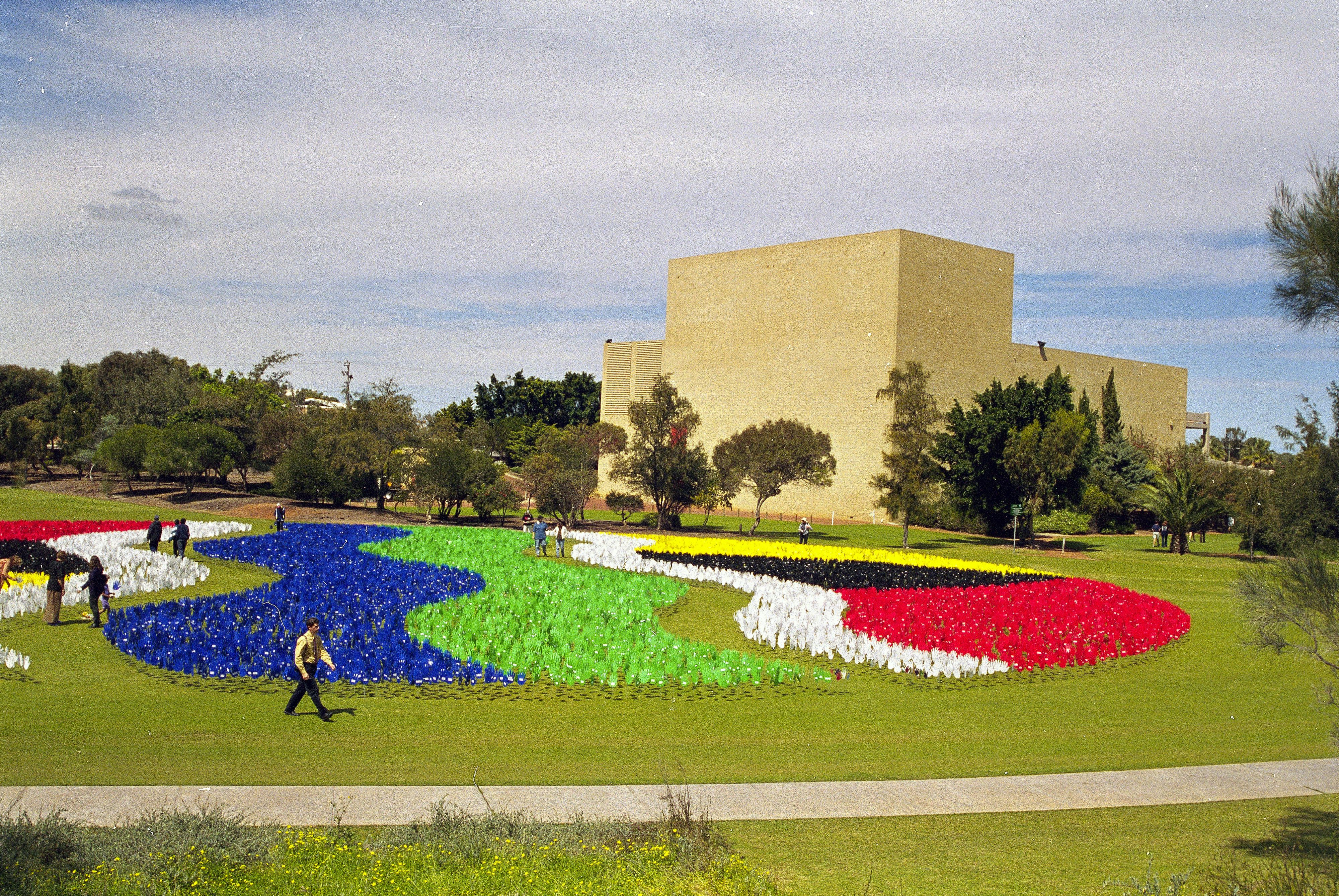
The design is a beach ball with green and blue areas representing the ocean and Torres Strait Islanders, the white areas the breaking waves and the other colours portray Australians from all backgrounds coming together. Queens Park Geraldton, Designer: Saul Joseph, 18 September 1998.
The design is a beach ball with green and blue areas representing the ocean and Torres Strait Islanders, the white areas the breaking waves and the other colours portray Australians from all backgrounds coming together. Queens Park Geraldton, Designer: Saul Joseph, 18 September 1998.
On Sorry Day 2014, AIATSIS staff, ANTaR members, ACT Health Department staff and children from Weetangera Primary School combined to plant hundreds of hands to commemorate Sorry Day and AIATSIS’ 50 year anniversary.
References
AIATSIS 2007. Wik coexistence,pastoral leases, mining, native title and the ten point plan.
FAIRA, 1998. Sea of Hands Promotes Co-existence Sanity.
Green Left 1997. Support for Native Title.
Gunstone, A. These blokes are re-inventing the 19th Century: The Howard Government's record on Indigenous Affairs 1996-2006, Journal of Indigenous Policy, Issue 7.
National Indigenous Working Group on Native Title 1997. Co-existence - Negotiation and Certainty (Preface and Executive Summary), Indigenous Law Bulletin 45.
National Indigenous Working Group 1997. Critique of the 10 Point Plan, Indigenous Law Bulletin 56.
Seas of Hands 2011, A National Tour of ANTaR's Sea of Hands in 1998.
Short, D 2007. Reconciliation and colonial power: Indigenous rights in Australia, Aldershot, England, Ashgate.

